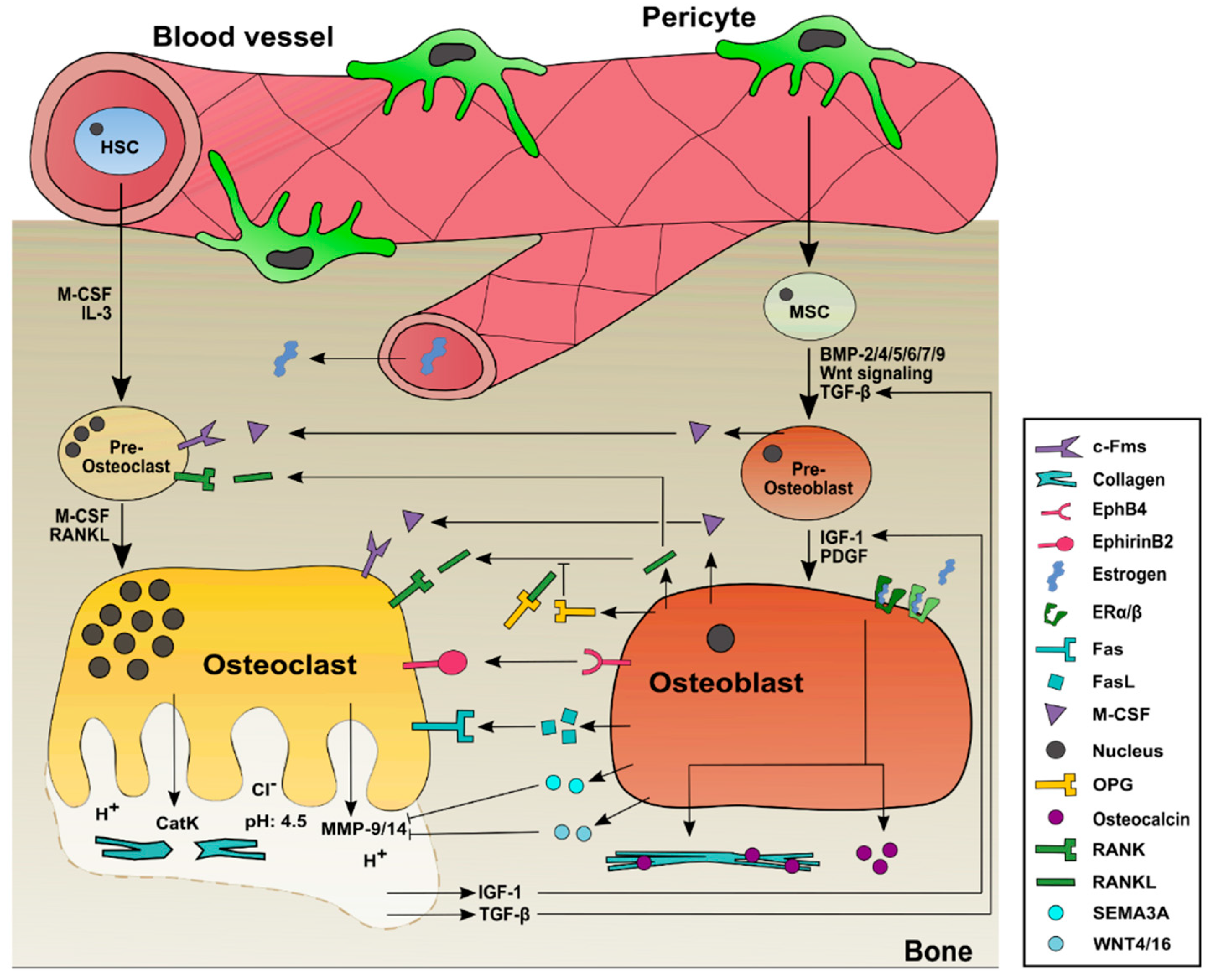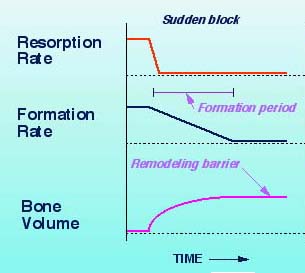After Bisphosphonate Use Which Bone-forming Medication Is Best
In clinical use bisphosphonates are mainly considered to be bone-specific agents but anti-tumour effects have been reported in a number of in vitro and in vivo studies. These medications help increase bone mineral density in the spine and hips and may help reduce the risk of fracture.

Bone Resorption Marker And Bone Formation Marker Measurements When Download Scientific Diagram
Bisphosphonates are usually the first choice for osteoporosis treatment.

. All bisphosphonates inhibit osteoclast activity and some also inhibit the maturation of mononuclear precursors into active osteoclasts. A clinical practice guideline update from the American College of Physicians. But then again it comes with an increased risk of causing atypical femur fractures.
Alendronate risedronate and zoledronic acid decrease the risk of spine hips and other nonvertebral fractures. This article is about a specific class of drugs call bisphosphonates. This review looked at the effect of bisphosphonates on pain caused by bone metastases.
You should take these medications in the morning with a full glass of water at least a half-hour before eating drinking or taking other medications. The focus of this review is on the use of four nitrogen-containing bisphosphonates. By slowing or stopping the bone-resorbing portion o f the remodeling cycle bisphosphonates allow new bone formation to catch up with bone resorption.
Mild Risk of Fracture. Beneficial effects are the relief of bone pain a reduction of fracture incidence improvement of corporal mobility and recovery of normal vertebral form. A 2013 PLoS study is based on a review of 20 clinical trials with a time limit of Jan.
Imagine getting a bone fracture with little force or trauma after taking the drug for an average. Theyre prescribed for people with osteopenia softening of the bones osteoporosis brittle and easily broken bones. Bisphosphonates have been used in clinical practice for the treatment of metabolic bone diseases that include heterotopic ossification osteogenesis imperfecta hypercalcemia of malignancy Pagets disease of bone metastatic bone disease and multiple myeloma.
Use bisphosphonates for a 3 to 5 year period and then stop. All bisphosphonates improve bone mineral density in postmenopausal women with osteoporosis. Accessed October 2 2017.
Bisphosphonates are medications known to decrease bone resorption by inhibiting osteoclastic activity. It included randomized clinical trials of bisphosphonates for adults with rheumatic disease with. Burr reviews what is known about this topic.
Ibandronate has not consistently been shown to. Bisphosphonates have been around for 50 years but 25 years after their approval for use in humans their mechanical effects on bone are still not fully understood. Alendronate Binosto Fosamax Ibandronate Boniva Risedronate Actonel Atelvia Zoledronic acid Reclast Zometa These drugs help strengthen bones and prevent fractures.
Drugs called bisphosphonates alendronate ibandronate risedronate and zoledronic acid are among the first drugs a doctor considers to treat osteoporosis. They are the first-line therapy for the treatment of osteoporosis because a significant body of literature has proved their efficacy in reducing the risk of fracture in the hip spine and other nonvertebral osseous sites. They reduce the risk of hip and spine fractures.
Treatment of low bone density or osteoporosis to prevent fractures in men and women. Bisphosphonates are potent inhibitors of bone resorption acting by inducing osteoclast apoptosis and thereby preventing the development of cancer-induced bone lesions. Treatment with bisphosphonates BP improves the quality of life of patients with osteogenesis imperfecta OI.
All of these medications come in tablet form except for zoledronic acid Reclast which is given intravenously IV once per year. Ann Intern Med 16611818839. Bisphosphonates are a group of drugs used to help prevent and treat bone loss.
The goal of oral bisphosphonate medications is to slow down the rate of bone thinning resulting in stronger bones that are less likely to break. Zoledronic acid and pamidronate. The most common sites for osteoporosis fractures are the wrist hip and spine.
A new bisphosphonate for prevention and treatment of postmenopausal osteoporosis. Examples of bisphosphonates include. Risk of atypical femoral fracture during and after bisphosphonate use.
Schilcher J et al. Alendronate Fosamax a weekly pill Risedronate Actonel a weekly or monthly pill Ibandronate Boniva a monthly pill or quarterly intravenous IV infusion Zoledronic acid Reclast an annual IV infusion. In the United States two preparations are used.
Analgesic Therapy Breast cancer and multiple myeloma have been found to be the most responsive tumors to bisphosphonates. Bisphosphonates do have some effect but. The effect on bone mass and bone markers of different doses of ibandronate.
They can help prevent fractures of the spine hip and wrist in people with osteoporosis and prevent bone loss for men and women taking steroids. Bisphosphonates are medicines that affect the way bone develops and are proving useful in treating patients with cancer that has invaded the bone metastasis. Bisphosphonates are used in the prevention and treatment of postmenopausal osteoporosis and some are approved for the treatment of osteoporosis in men.
The efficacy of bisphosphonates is better for prevention rather than for the treatment of osteoporosis in rheumatic patients the researchers concluded. In the new report in Bone Dr. Uses Bisphosphonates can be used to reduce the risk of hip and spine fractures in osteoporosis.
With respect to bone mineral density BMD alendronate ibandronate risedronate and zoledronic acid have been shown to increase BMD by 5-7 and 16-5 in the spine and femoral neck respectively after 3 years of treatment Black DM et al Randomised trial of effect of alendronate on risk of fracture in women with existing vertebral fractures. Bisphosphonates are a group of drugs that work by slowing bone loss. American Bone Health.
Bisphosphonate treatment should be discontinued and not resumed until the patient meets treatment guidelines. The bisphosphonate drug holiday can continue until there has been a significant loss of bone mineral density. Both women and men may take bisphosphonates.
Treatment with bisphosphonates for one to three years increases bone mineral density BMD strength. Pain control is an important part of cancer management. Bone renewal is a slow process but in many people an increase in bone density can be measured over five years of treatment.

Bisphosphonates Effects On Bone

Sites Of Action For First Line Osteoporosis Treatments Teriparatide A Download Scientific Diagram

Ijms Free Full Text Therapeutic Treatments For Osteoporosis Mdash Which Combination Of Pills Is The Best Among The Bad Html

No comments for "After Bisphosphonate Use Which Bone-forming Medication Is Best"
Post a Comment